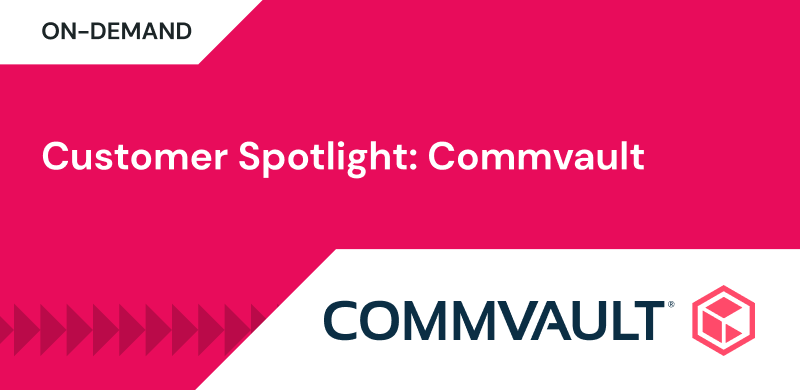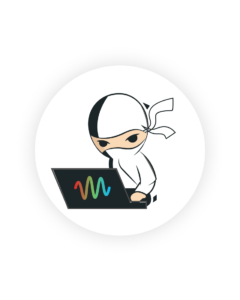
Feb 24, 2020
Part 1: Discussing The Evolution of Support with Qlik and SupportLogic
Customer Successdigital transformationartificial intelligenceB2B supportmachine learningsupport operations
Hello, today we’re kicking off a series of blogs on Support Leadership by bringing together the VP of Support Services from Qlik, Daniel Coullet and SupportLogic’s CEO, Krishna Raj Raja. This will be a multi part blog on how B2B Support teams are handling Digital Transformation and the confluence of Support and Customer Success. During the second installment, there’s even a surprise guest.
Question: How did you get started in the support industry and what’s changed the most in support operations since then?
Daniel: I started as a support engineer with PTC when there were about 300 employees. I was one of the first support engineers in Europe and scaled the support team to over 100 people over the next 10 years. I then built that same organization in Asia, across Japan, China, Singapore and Korea. After that, I gained experience building out our Worldwide “premium organization” before making a choice to move to the United States for a new role. In the States my role focused on our Cloud product first and then customer experience and voice of the customer. About two years ago I joined Qlik, as a VP of Customer Operations and Adoption Services. Recently, I was asked to go back to my roots to also run Support. That’s where we are now and this is a new mission for me as the business model has changed. This is about doing support and customer success in the subscription economy. This time around it’s about helping to get customers to first value – it’s much more proactive. Support is no longer viewed as a reactive organization at Qlik – our primary goal is preventing attrition and helping with expansion.
Krishna: My background is similar. I started as the first support engineer for VMware in India. It was a small support team with five people, when I joined. I came from an engineering background, so I approached support with a different mindset. I always considered what engineering needs to fix based on customer’s pain points. Even though I was a support engineer I always had ideas about how the product needed to be improved based on support conversations. Whenever I spoke to the engineering and product teams, the gap between what support knew about customer pain points and what engineering knew was stark. I was astounded how disconnected engineering and product teams were from customer pain points. I tried to bridge that gap at VMware by first struggling with the dump of reports from the ticketing system. It was a dump of all the metadata from all of the tickets, and it didn’t paint a complete picture regarding the customer’s pain points. It also failed to provide any context for why they were experiencing the pain point. This is when I realized that product and engineering would benefit greatly from being more closely involved in support. This would form their context when they built software and help them make the right design choices. After spending many years at VMware in support, I went into engineering at VMware. Afterwards I was at a startup as a Product Manager. I’ve worn different hats. In every role that I did, the perspective of customer pain points has always been extremely helpful. So that’s what prompted me to start SupportLogic. Essentially, I noticed a huge gap between what the customers see on a daily basis and what product and engineering build. My question was how do we bridge that gap?
Question: What’s your vision for where B2B customer support is headed in the future?
Daniel: It’s interesting because Krishna and I come from different backgrounds. I guess we have the same vision. I fully agree that current CRM systems lock data into a system, not providing us with a picture of what problem we have to solve or what pain points we are facing. The industry has been building an organization called Customer Success, basically to help with where support has been falling short. I’m always challenging people’s point of view in terms of how support relates to customer success. I believe that support has not seen very innovative technology solutions, except you guys. In my mind, with tools like SupportLogic, customer success management won’t be needed except in situations where you need a dedicated CSM. I think what you’re doing with SupportLogic is innovative – you’re getting support closer to what we rely on customer success for. You help support deliver value, while giving customers a great experience. As you continue to innovate, and support teams find success, I think we’ll see support continue to extend into the Customer Success space.
Krishna: Absolutely Daniel I have that same vision. Every touch point that a customer has with the company, is an opportunity for the company to make an impact with the customer. Every escalation is an opportunity. Every support ticket is an opportunity to educate customers. To increase loyalty of the product. You’ll basically learn more from that customer, and then improve your product. All three interactions don’t need to be done by separate teams if support has the tools. One advantageous thing about support is you typically don’t differentiate customers by their account size. When you deliver a great experience to a small customer, they’ll remember it. In the future, when they go to a different company, they’ll evangelize your product. There’s a lot of long term benefits to having support on the front lines. Customer Success can get very myopic and focused on only the largest accounts. Then you’re not thinking in terms of people, you’re thinking in terms of accounts. At the end of the day, people are the ones who are going to recommend you, not an account. When support instills a good experience in them, they’ll carry that experience with them. I agree, there’s a lot of long term benefits to blurring the responsibilities of Support with Customer Success.
Question: How can Support deliver more value to their organizations?
Daniel: Organizations talk a lot about onboarding from an account perspective, we don’t talk about user adoption. In this industry, we don’t really talk about what these individual users are actually thinking about you as a company. In my new job today, our Chief Customer Officer, Roberto Sigona is asking to assign support representative to onboarding of new users, and user adoption in existing accounts, as metrics to be monitored by support. I think that’s a great vision. I think it means a change of mindset, it means people’s skill profiles have to change, it means that the technology has to evolve as well. Our organization is quickly shifting into this new mission. I’m excited to make a huge impact on renewal, expansion and churn.
Krishna: I think that a change in perspective is required so that support is not a break/fix department anymore. Support is your marketing and your sales department. Once support establishes trust with a customer, support becomes your sales engine. Customers trust support’s judgment because they understand the technicalities of the product in a deep way and so customers trust any recommendations support gives. This is missing in many sales conversations, which happen at a high level, and similarly in marketing. The best marketing you can do is giving a great experience to your customers.
Daniel: This goes back to my point about the profile of the support engineer. One thing we need to build out is the knowledge to understand the language of our customers. We need to understand how our product is part of our customer’s processes and business outcomes. If we understand how the product we sell equates value for customers, we are able to understand our customer’s business outcomes and goals they have with our product then I agree that support can drive growth. The relationship, built on trust when customer’s inquiries get resolved, creates leads for expansion.
That’s all for today’s post. It’d be great to hear what in this discussion has caught your eye or if any of these topics mirror the digital transformation initiative in your support org.
Don’t miss out
Want the latest B2B Support, AI and ML blogs delivered straight to your inbox?





